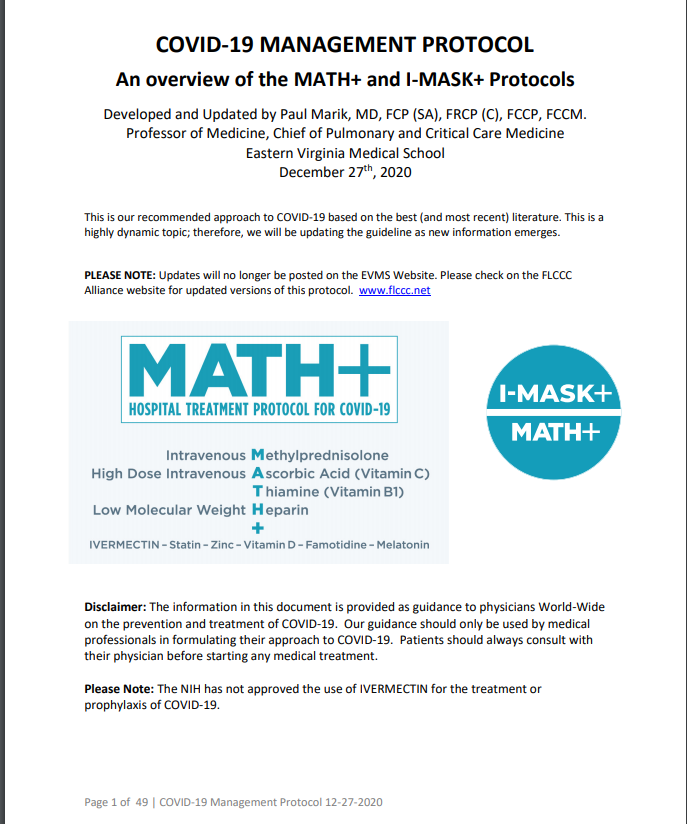
Excellent Doubt
As we learned in school, Earth's Atmospheric air is made up of
Nitrogen 78%
Oxygen 21%
and the remaining 1% made up of other gases
See Pie chart below
So we are breathing this air
We need ONLY 21% right?
Why 99.9% oxygen cylinders then?

As we learned in school, Earth's Atmospheric air is made up of
Nitrogen 78%
Oxygen 21%
and the remaining 1% made up of other gases
See Pie chart below
So we are breathing this air
We need ONLY 21% right?
Why 99.9% oxygen cylinders then?
https://twitter.com/mentabolism/status/1385096042627076100?s=20

This answer is a little long so bear with me. I will try and keep this as simple & brief as possible.
To start with 4 questions...
What is ventilation?
What is oxygenation?
What is respiration?
What is the difference?
To start with 4 questions...
What is ventilation?
What is oxygenation?
What is respiration?
What is the difference?
Ventilation is a term that refers to the molecular exchange of oxygen and carbon dioxide in the body. Carbon dioxide is transported through the veins to the lungs where it can be exhaled. This natural phenomenon keeps the blood acidity (the pH) down within the normal range.
remember pH / blood acidity for later we will come back to that
Oxygenation is a term that refers to the molecular absorbance of oxygen. Air enters the lungs and oxygen is picked up in the hemoglobin of red blood cells so that it can be transported and distributed to the tissues of the body.
What is the Difference Between Ventilation and Oxygenation?
Ventilation and oxygenation are fundamentally different physiological processes. Ventilation refers to the patient’s ability to take in oxygen and remove carbon dioxide.
Ventilation and oxygenation are fundamentally different physiological processes. Ventilation refers to the patient’s ability to take in oxygen and remove carbon dioxide.
Oxygenation refers to the patient’s ability to take in oxygen from the lungs and distribute it to the tissues and organs of the body.
Capnography can be used to monitor the patient’s ventilation status, whereas, pulse oximetry can be used to monitor their oxygenation status.
Capnography can be used to monitor the patient’s ventilation status, whereas, pulse oximetry can be used to monitor their oxygenation status.
What is Respiration?
Respiration is a general term that refers to the action of breathing via the combination of ventilation and oxygenation. It is the biochemical process of both taking in oxygen and removing carbon dioxide.
Respiration is a general term that refers to the action of breathing via the combination of ventilation and oxygenation. It is the biochemical process of both taking in oxygen and removing carbon dioxide.
So the basic concept in a single tweet
Human beings RESPIRATE (breathe) in air containing oxygen, the lungs are where exchanging of oxygen & carbon dioxide between blood & air occurs, (VENTILATE) and the oxygen travel in hemoglobin to OXYGENATE the various organs cells etc
Human beings RESPIRATE (breathe) in air containing oxygen, the lungs are where exchanging of oxygen & carbon dioxide between blood & air occurs, (VENTILATE) and the oxygen travel in hemoglobin to OXYGENATE the various organs cells etc
With me so far?
😀
ok so now the problems occurs when there is an issue with any or all of the 3 processes mentioned above
that is
Respiration
Ventilation
Oxygenation
there are many many causes for each so we will stick to covid19
😀
ok so now the problems occurs when there is an issue with any or all of the 3 processes mentioned above
that is
Respiration
Ventilation
Oxygenation
there are many many causes for each so we will stick to covid19
When the virus gets in your body, it comes into contact with the mucous membranes that line your nose, mouth, and eyes. The virus enters a healthy cell and uses the cell to make new virus parts. It multiplies, and the new viruses infect nearby cells.
Think of your respiratory tract as an upside-down tree. The trunk is your trachea or windpipe. It splits into smaller & smaller branches in your lungs. At the end of each branch are tiny air sacs called alveoli. This is where oxygen goes into your blood & carbon dioxide comes out
The new coronavirus can infect the upper or lower part of your respiratory tract. It travels down your airways. The lining can become irritated and inflamed. In some cases, the infection can reach all the way down into your alveoli.
Mild and Moderate Cases
As the infection travels your respiratory tract, your immune system fights back. Your lungs and airways swell and become inflamed. This can start in one part of your lung and spread.
As the infection travels your respiratory tract, your immune system fights back. Your lungs and airways swell and become inflamed. This can start in one part of your lung and spread.
About 80% of people who have COVID-19 get mild to moderate symptoms. You may have a dry cough or a sore throat. Some people have pneumonia, a lung infection in which the alveoli are inflamed.
So respiration is affected!
So respiration is affected!
Doctors can see signs of respiratory inflammation on a chest X-ray or CT scan. On a chest CT, they may see something they call “ground-glass opacity” because it looks like the frosted glass on a shower door.
Severe Cases
About 14% of COVID-19 cases are severe, with an infection that affects both lungs. As the swelling gets worse, your lungs fill with fluid and debris.
About 14% of COVID-19 cases are severe, with an infection that affects both lungs. As the swelling gets worse, your lungs fill with fluid and debris.
You might also have more serious pneumonia. The air sacs fill with mucus, fluid, and other cells that are trying to fight the infection. This can make it harder for your body to take in oxygen. You may have trouble breathing or feel short of breath. You may also breathe faster.
If your doctor takes a CT scan of your chest, the opaque spots in your lungs look like they start to connect to each other.
so Respiration and Ventilation affected.
so Respiration and Ventilation affected.
Critical Cases
In about 5% of total cases the infection can damage the walls & linings of the air sacs in your lungs. As your body tries to fight it, your lungs become more inflamed & fill with fluid. This can make it harder for them to swap oxygen & carbon dioxide.
In about 5% of total cases the infection can damage the walls & linings of the air sacs in your lungs. As your body tries to fight it, your lungs become more inflamed & fill with fluid. This can make it harder for them to swap oxygen & carbon dioxide.
You might have severe pneumonia or acute respiratory distress syndrome (ARDS). In the most critical cases, your lungs need help from a machine called a ventilator to do their job.
There’s evidence that 20-30% of the critically ill patients can develop clots in the lungs, heart, brain and legs, some of which are life threatening.
A few people have needed lung transplants because of severe tissue damage from COVID-19.
A few people have needed lung transplants because of severe tissue damage from COVID-19.
so Respiration, Ventilation AND Oxygenation affected!
Now you can see why we are facing some serious issues with covid19
Now you can see why we are facing some serious issues with covid19
So the main problem at each point has been identified
The biggest complication is because of the obstacles to the 3 natural processes there will be a build up of carbon dioxide in the blood
Build up of carbon dioxide is bad but the body can manage it for a while
The biggest complication is because of the obstacles to the 3 natural processes there will be a build up of carbon dioxide in the blood
Build up of carbon dioxide is bad but the body can manage it for a while
Remember the pH / blood acid i mentioned earlier?
this is where it is important
this is where it is important
Hypercapnia, hypercarbia, or hypercapnea, is the physiological term for the condition of, and the body’s
response to, excessive carbon dioxide.
response to, excessive carbon dioxide.
When CO2 is breathed into the lungs diffuses across the alveolar-capillary membrane, and enters the bloodstream. As it combines with water, it forms carbonic acid, making the blood acidic. So CO2 in the bloodstream lowers the blood pH
Blood becomes acidic
Blood becomes acidic
When CO2 levels become excessive, a condition known as acidosis occurs. This is defined as the pH of the
blood becoming less than 7.35
blood becoming less than 7.35
The body maintains the balance mainly by using bicarbonate ions in the blood. As the body responds to neutralize this condition, an electrolyte imbalance – an increase of plasma chloride, potassium, calcium and sodium, can occur.
In the blood stream, CO2 concentration is also controlled by reversible reactions with two major blood components, plasma proteins and hemoglobin.
In addition, the body uses other specific mechanisms to compensate for the excess carbon dioxide. Breathing rate and breathing volume increase, the blood pressure increases, the heart rate increases, and kidney bicarbonate production
( in order to buffer the effects of blood acidosis), occur. Blood vessels in the extremities constrict, restricting blood flow to these body parts.
At the same time, arteries in the brain, spinal cord, and heart dilate, so that more blood flows is diverted to maintain the function of these critical organs.
When there is exposure to very high levels of CO2, in excess of 5% (50,000 ppm), the body’s compensatory
mechanisms can become overwhelmed, and the central nervous system (brain and spinal cord) functions are depressed, then fail. Death soon follows.
mechanisms can become overwhelmed, and the central nervous system (brain and spinal cord) functions are depressed, then fail. Death soon follows.
so how do we treat this?
2 steps
wash out the carbon dioxide and refill with oxygen
this is where ventilators and 100% oxygen comes into play
2 steps
wash out the carbon dioxide and refill with oxygen
this is where ventilators and 100% oxygen comes into play
ventilators are machines which do the work of respiration and ventilation for the patient
it pumps in high concentration oxygen under pressure
since concentration is much higher than atmospheric air the difference allows for diffusion to occur in the damaged lungs
it pumps in high concentration oxygen under pressure
since concentration is much higher than atmospheric air the difference allows for diffusion to occur in the damaged lungs
hence why we need oxygen cylinders
commercially available oxygen concentrators are a stop gap method
better than nothing i suppose
they can in most cases help to a certain point but they will never reach the levels of medical oxygen cylinders
commercially available oxygen concentrators are a stop gap method
better than nothing i suppose
they can in most cases help to a certain point but they will never reach the levels of medical oxygen cylinders
so when we say we have an "oxygen shortage"
trust the doctors when we say THAT IS AN EMERGENCY THAT NEEDS TO BE SORTED ASAP!
trust the doctors when we say THAT IS AN EMERGENCY THAT NEEDS TO BE SORTED ASAP!
• • •
Missing some Tweet in this thread? You can try to
force a refresh







